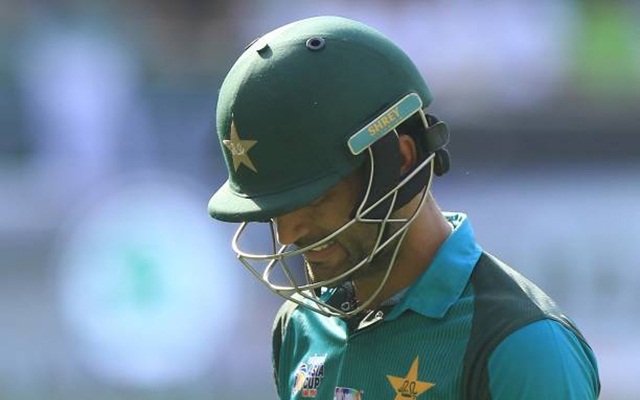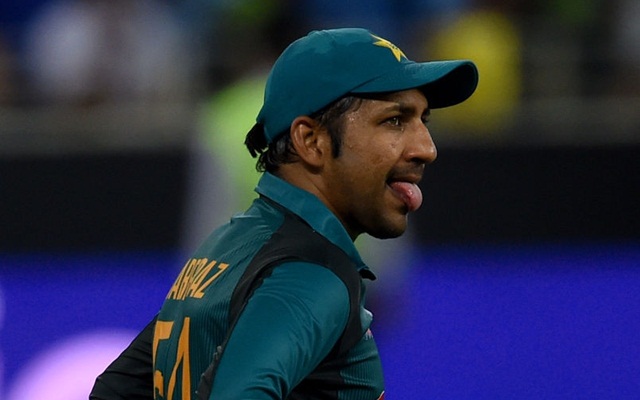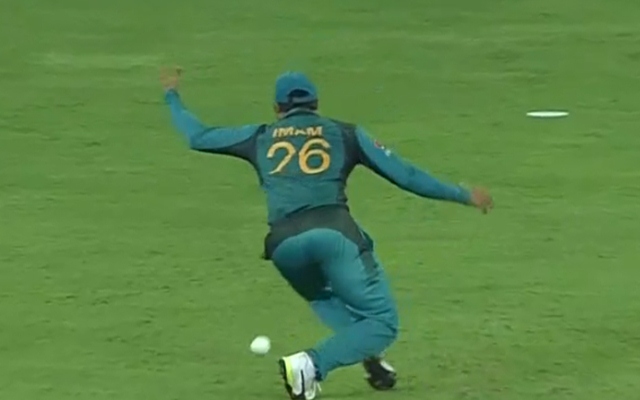4 Reasons that led to Pakistan's exit from the Asia Cup 2018
Pakistan after being knocked out of the Asia Cup will hope they can sort themselves out well ahead of the World Cup which is less than 35 weeks away.
2 Min Read


Pakistan Team. (Photo Source: Twitter)

They started off as favourites, had the luxury of playing in their own backyard – albeit an adopted one – but Pakistan have once again slumped. This has been a trademark of this current side: Sarfraz Ahmed seems to have assembled a bunch of men, who individually are undeniably good cricketers, but as a team are in no position to up their game.
This edition of the Asia Cup has been particularly disappointing for the Pakistanis, and their humiliating exit from the tournament calls for proper dissection. Here’s a look at the four reasons behind Pakistan’s poor show in the 2018 Asia Cup.
1. Overdependence on the top order for runs

Pakistan’s openers are, on paper, as explosive as any other world cricket may have seen. In Imam ul-Haq they have a steady yet attacking batsman, who looks to stay at the crease for as long as possible and keep the scoreboard ticking. Imam has done a fine job with the bat in the Asia Cup: he scored 3 fifties, two of which he extended into 80+ individual scores. At the other end however, the more aggressive Fakhar Zaman has been a right disappointment.
Fakhar rose to fame for his heroic century which practically handed Pakistan their maiden Champions Trophy title. But the left-hander has only managed to squeeze out 56 runs off the five matches he’s played, which included two consecutive ducks.
At no.3 was their pillar Babar Azam, who wasn’t particularly impressive either. He got a 66 against Afghanistan and fell three short of a second fifty against India. Barring these two knocks, Babar has looked fairly scratchy as well. The man who did play the role of the pillar was veteran Shoaib Malik, but he was juggled around, finding himself at no.4 and at times at no.5. Pakistan were clearly dependent on their top order to fire, but that wasn’t to be. When the runs didn’t come freely, they got restless and lost their wicket cheaply, which was exemplified in the group game against India.
2. Sarfraz’s captaincy

There have been occasions when a captain has had to take the blame simply because his players have underperformed. But in Pakistan’s case, Sarfraz Ahmed’s leadership has very much come under the scanner. His insistence on playing Mohammad Amir, who went wicketless for five straight matches, shows that his focus was only on given players and not an effective XI.
Perhaps he was forced to bring in Junaid Khan for the do-or-die match against Bangladesh, and he made a telling impact in his very first appearance with figures of 4 for 19. Squad selection is an area where Pakistan definitely missed a trick.
On too many occasions Pakistan have allowed their opposition to slip away. Bangladesh were 12 for 3 on Wednesday but nevertheless ended with a respectable total of 239. In retrospect, that proved to be way too many for Pakistan as they fell 37 short. Sarfraz will be forced to take responsibility for releasing the grip despite having full control of the match.
A captain’s role is to encourage his bowlers and fielders, but Sarfraz was often seen losing his cool and reacting aggressively to minor incidents. His behaviour may have well put unnecessary pressure on the players, deterring them from expressing themselves freely on the field. The skipper clearly didn’t back his players enough, and he’s the only one who can take the blame for his flawed leadership.
3. Dropped catches

Pakistan were, not too long ago, rated among the world’s best fielding sides. They were electric on the field, executed more run-outs than anybody else, and their catching seemed flawless. But that all went up in smoke, almost overnight. The moment Pakistan stepped into the Asia Cup, their fielders found themselves with butterfingers.
There were dropped catches galore, but these weren’t just inconsequential spills. They dropped catches off batsmen who then went on to score centuries. Pakistan certainly paid for their poor fielding standards, and someone’s got to take a serious look at this department before the team departs for the World Cup.
4. An under-prepared team

Former Pakistan off-spinner Saqlain Mushtaq made a valid point – Pakistan should have played more top-level teams prior to the Asia Cup. “We never played against a top team after the Champions Trophy. We played against Zimbabwe, Afghanistan or Bangladesh. If you play with lower-ranked teams, you will not improve and you won’t know where you are going,” he said. And indeed he was right; Pakistan seemed to have no answer to arch-rivals India who routed them twice in this Asia Cup, by 8 and 9 wickets in the first and second encounter respectively.
Moreover, the Men in Green were playing in home conditions, and despite being touted as favourites, Pakistan showed little class and professionalism in this edition of the Asia Cup. Save a few individual performances, namely Shoaib Malik’s experienced knocks and Junaid Khan‘s exceptional spell, Pakistan were a heavily under-prepared side going into the tournament.
All in all, this is a team that has great potential. But someone needs to flash a torch into the depths of the team and see which corners need tinkering, repairs and replacements. As for Pakistan, they will hope they can sort themselves out well ahead of the World Cup which is less than 35 weeks away.
For all the latest cricket news and other updates follow CricTracker.
Download Our App